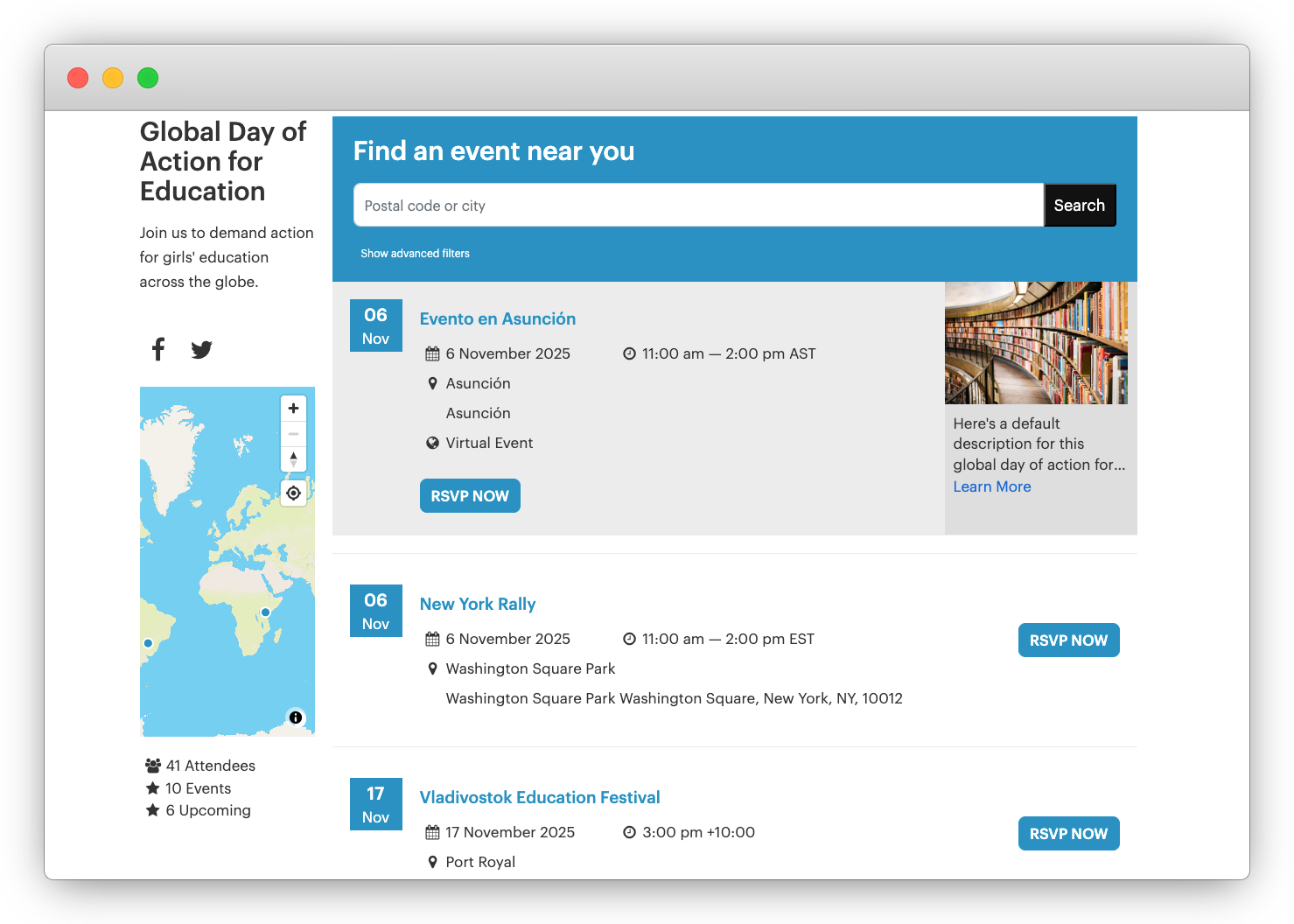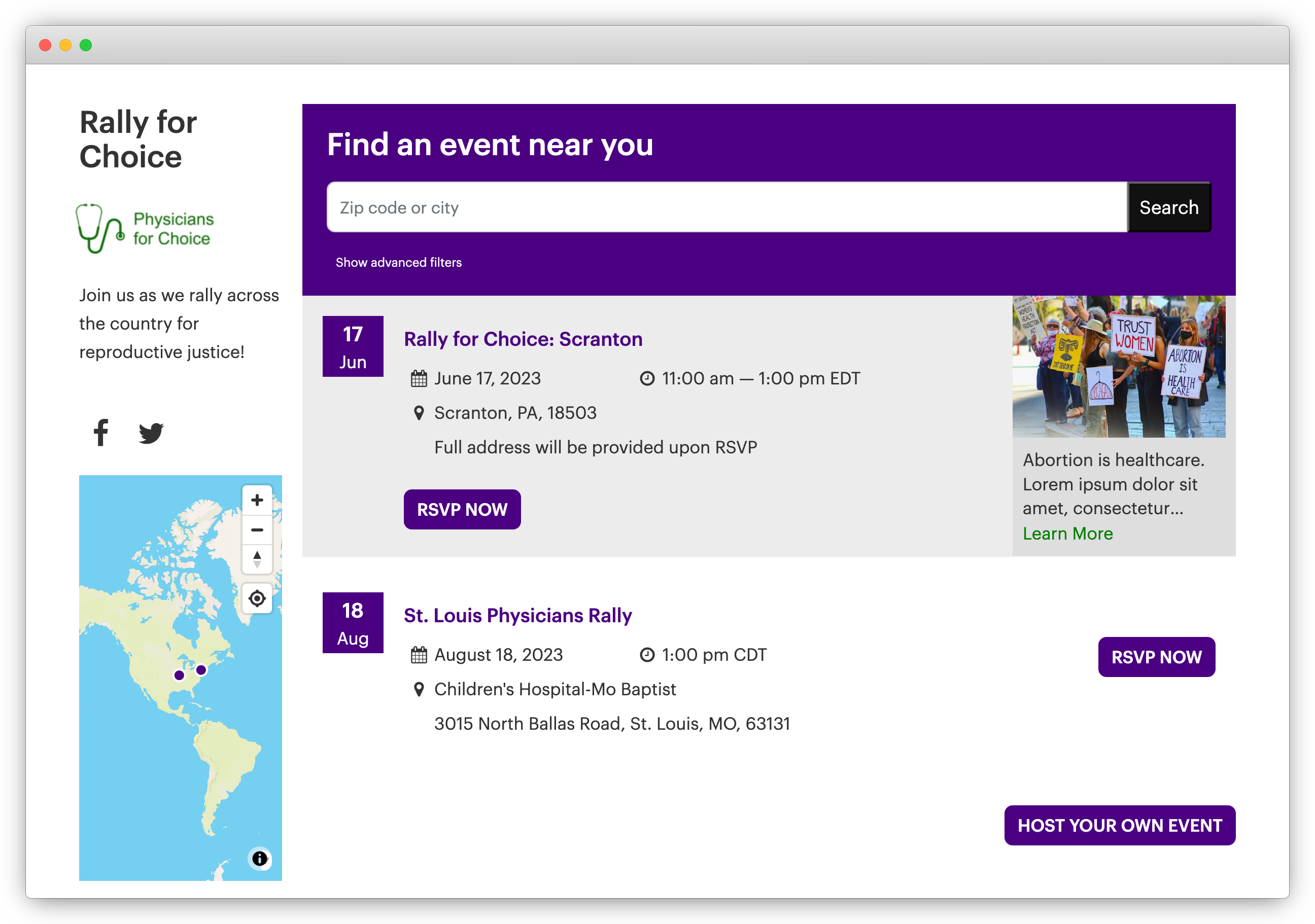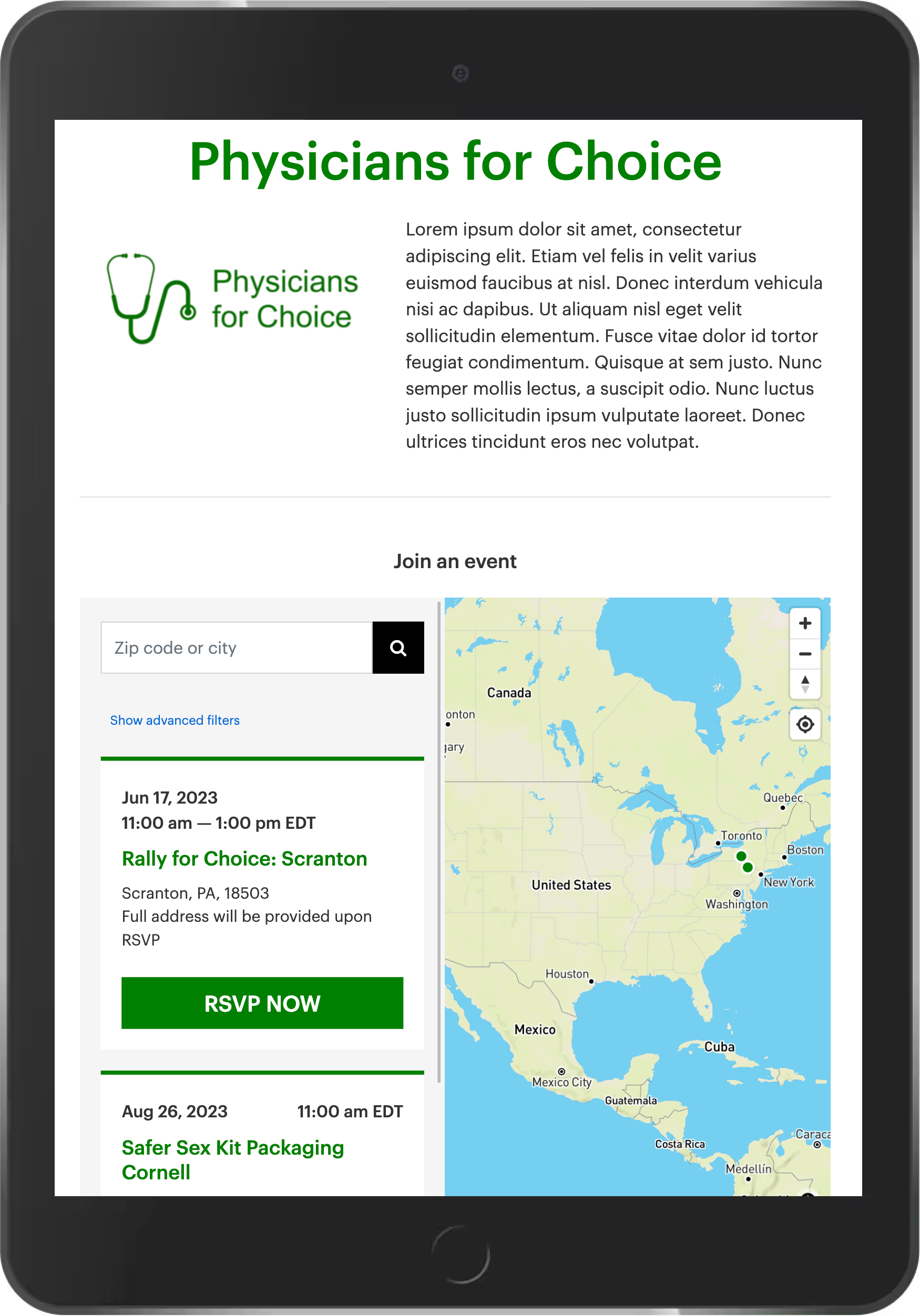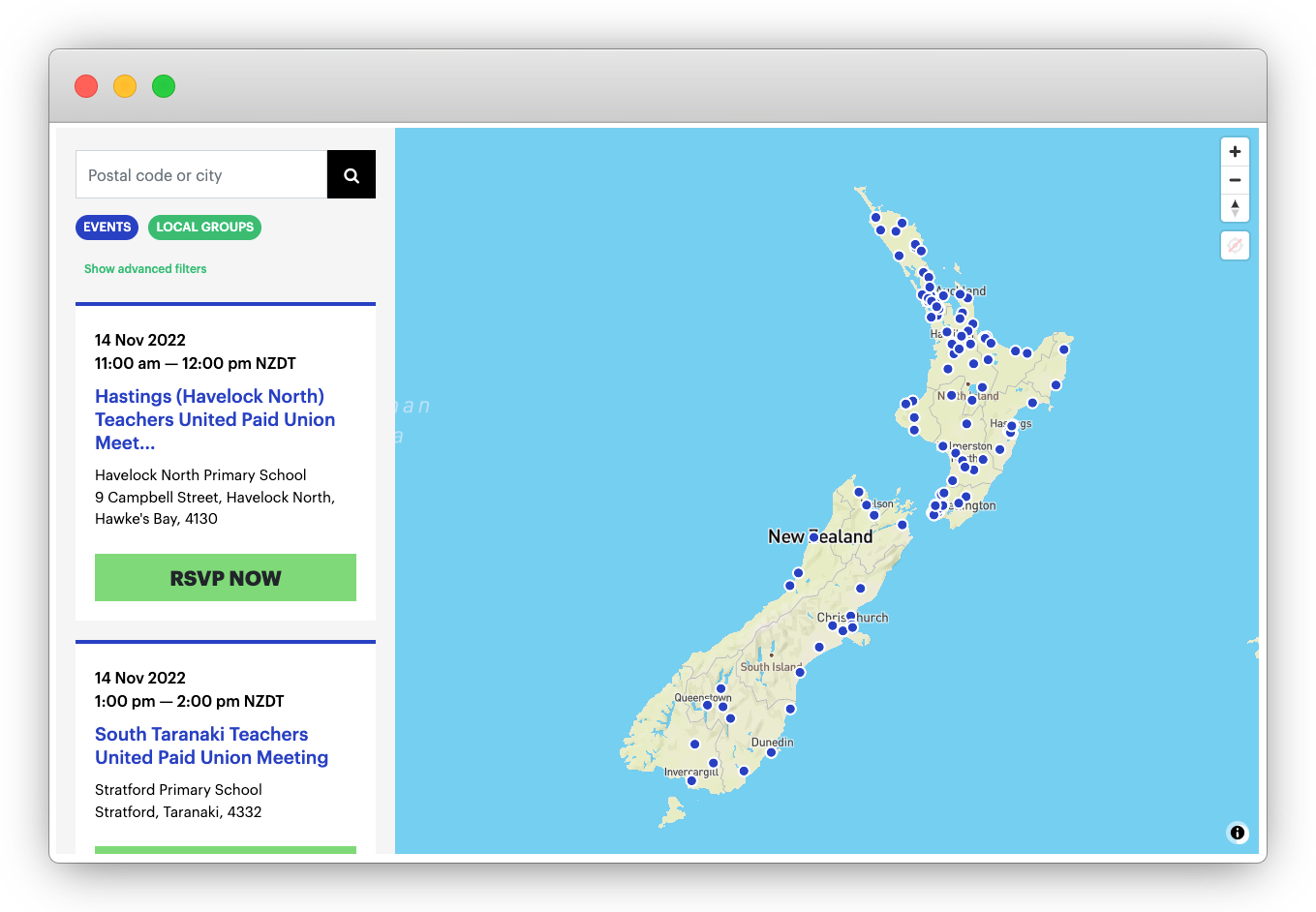Boost Your Events Mobilizations with Coalitions

Organizing a large series of events, like a day of action, can be a powerful way for an organization to demonstrate their reach and show the full breadth of support for their cause. However, recruiting so many events and adequately supporting all hosts can be a daunting task for a single organization to manage.
Luckily, these event mobilizations are great opportunities for collaboration with partners. Working with partner organizations can make it easier to recruit and support hosts, find new attendees, and manage events on the day. The additional support from partner organizations can help you grow your mobilization and ensure its success.

ControlShift’s partnerships and calendars features make it easy for organizations to work together on events mobilizations. Now, with our recent releases, we’ve made our partnerships and calendars features even more powerful – allowing you to configure the tools to match your unique coalition.
Four common ways to use ControlShift’s partners and calendars features together:
- Single Partner Events: Collaborate with a single partner organization to recruit, cohost, and manage a series of events. Every event will be included in the partnership, and attendees may be shared with the partner.
- Primary Partner Events: Collaborate with multiple partner organizations to recruit, cohost, and manage a series of events. One organization is the primary partner – they’re a cohost for all events in this mobilization and all events will be included in their partnership. There are also secondary partners – they’re only collaborating on a subset of the events in this mobilization. This type of arrangement can be used for a national series of events, where a national organization is the primary partner and local organizations are secondary partners on the events in their communities only. Depending on the event, attendees may be shared with one or both partners.
- Independent Partner Events: Collaborate with multiple partner organizations, each of which will independently recruit, cohost, and manage their own events within the broader mobilization. Each partner may have access to the attendees of the events that they recruited. This can be used for a day of action that includes very different types of events cohosted with very different organizations.
- Coequal Partners/True Coalition Events: Collaborate with multiple partner organizations to recruit, cohost, and manage a series of events. All partners are equal cohosts of every event, regardless of which organization initially recruited the event. All attendees may be shared with all partners.
Regardless of which type of coalition matches your organizing, ControlShift’s calendars feature can make it easy to collaborate and manage the events, hosts, and your partners. Paired with our partnerships feature, your organization can decide exactly how attendee data is shared with partners, how much access partner organizations are given, and even customize event pages with partner-specific fonts and colors.

If you’re ready to start an events mobilization, we have some recommendations for how to get started. You can also see our recommendations for configuring ControlShift’s tools to power each of the use cases above.
Recruit Hosts
Recruiting event hosts is the most critical stage of an events mobilization. More events mean that your potential attendees are more likely to find events near them. More event hosts will also grow your event mobilization audience, as hosts recruit new supporters from their networks.
-
Email your list: Sending an email to your existing list is often the easiest way to start your recruitment.
- When sending your email, make sure to explain why the event mobilization will be key to your success, so that prospective hosts understand that their actions will be crucial to the win.
- Segmenting your list by location, and tailoring the event host ask to their location (e.g. “Will you host an event in Liverpool?”) can help reemphasize the host’s importance.
- Agreeing to host an event can be a bit scary for a first-time host, so providing information about what will happen during the event can be important to allaying those fears. ControlShift makes it easy for you to provide your supporters with a guide to hosting events during the creation process.
- Get on the phone: Calling supporters or sending text messages asking them to host an event can be another great option, especially for your more committed supporters. If you have supporters who have hosted events on your behalf in the past, or who have been especially active in other mobilizations, a personalized ask can convert them to hosting. If the supporter agrees to host an event during your conversation, ControlShift’s host recruitment feature can make it easy to quickly get their event onto your map without needing them to fill out the event form.
- Host recruitment events: Hosting a recruitment event requires more planning than other strategies, but it can be a powerful way of presenting your mobilization plan to your supporters and converting them to hosts. Zack Exley and Becky Bond refined this “barnstorm” tactic while organizing with the 2016 Bernie Sanders campaign (as described in their book Rules for Revolutionaries). Instead of trying to recruit event hosts from your email list directly, recruit supporters to attend a few big events led by your staff. (While for the Sanders campaign these events were in-person, the same tactics can also be taken online.)
At each event, tell the story of how the work done at every member-led event will add up to a big overall win. Essentially, use each staff-led event to recruit dozens of event hosts for your mobilization. Our friends at Getup! in Australia have had success replicating this model to massively increase the number of events that are created versus traditional event host recruitment over email. A good overview of this tactic was also written up by Micah Sifry in the Nation. - Partner up: For each of these tactics, remember to bring in your partners – usually these organizations will have their own lists of supporters that can be recruited using the same tactics above. Sharing your templates and workflows among partners can make recruitment easier for both parties and ensure consistent messaging across the coalition.
Support Hosts
When recruiting hosts, be sure to plan for how you’ll support your hosts and what materials you’ll provide. A well-written toolkit or quick videos are a great start and can allow hosts to peruse materials asynchronously, while also being easy to update as FAQs emerge.
A kickoff call with information for hosts who have already signed up can help get people excited for their event and allow them to ask questions and receive quick support from staff and other supporters.
Having an organizer or trusted volunteer call or text through your list of hosts to confirm the details of their events, answer questions, and walk each host through what you expect of them requires more time than other support options, but is often a great choice.
Depending on your audience of supporters, setting up a Slack channel, Discord, or WhatsApp group can also allow hosts to get support easily in advance of and during the event.
Again, be sure to bring your partners along when supporting hosts. Partner organizations may have recommendations for things to include in materials, suggestions for different ways of explaining events, and additional capacity to help manage one-on-one communications.
Recruit Attendees
Once you’ve recruited some hosts, the next step is to recruit attendees.
-
Map it: An easy-to-use, searchable map of upcoming events is essential in allowing supporters to find events near them while also demonstrating the national or global scale of your events campaign. ControlShift’s local organizing map tells the story of your mobilization, makes it easy for attendees to find events near them, and is embeddable on external sites.

-
Rolling emails: Like recruiting hosts, emailing your list is often the easiest way to recruit event attendees. To make this tactic work well, there are a few tweaks to make:
- Use mail-merge or dynamic content features to include each supporter’s closest event in their email. If possible, allow them to one-click RSVP from the email – without needing to enter their contact information into the RSVP form. This increases conversion rates significantly.
- Tell the story of how the activities at each event and their attendance will be key to winning the overall campaign.
- Help the recipient imagine how the event will unfold and what it will be like – people who don’t know what to expect are less likely to RSVP.
- Once you’ve sent your initial email, use click and RSVP data to refine and segment your list. People who have not RSVPed should continue to receive recruitment emails with updated content – let them know how many new events have been created and how many people have already RSVPed. If you have other updates about the campaign, include the updates in future recruitment emails. When possible, tell the story of how this member will be missing out if they don’t attend.
- Call and text: Peer-to-peer text messages and calling people who have attended events previously are two of the most effective ways to recruit supporters to events. Some organizations ask event hosts to do this work, but others have a centralized volunteer “texting team” that handles this task across all of the events that supporters have set up. (Our sister company DaisyChain makes it easy to distribute the work of texting potential attendees and tracking each of the conversations across a texting team.) Again segmentation and personalization is key – if you know where the supporters are located, send them their closest event without requiring them to search for it.
- Mirror events on Facebook: Facebook’s algorithm prioritizes native event content. Events from your organizing toolset that are replicated as native Facebook events will grow faster than if you simply share a webpage with the event information on Facebook. Facebook ads promoting native Facebook events also generally have a lower cost per attendee.
- Run local ads: Facebook ads that match events with a local Facebook audience can be a great way of finding new supporters near an event. Creating a separate ad campaign for each local event can be time consuming, but it can have a big impact. One tip: when choosing an image for your ads, using a local and easily recognizable landmark – even if it’s not immediately applicable to your event – can help grab your ad targets’ attention.
- Partner up: As with event host recruitment, bring your coalition partners into the process of recruiting attendees. Each of the tactics above can be replicated by a partner, who likely has their own lists of supporters. Leveraging those lists, and the relationships your partner has built, increases your attendee base.
Report Back
After the events, ask both the attendees and the event hosts to report back about their experiences. Many organizations ask participants to rate their experience while also providing qualitative feedback. You can use those ratings to identify problematic hosts and ways to improve the host or attendee experience for your next events mobilization. Sharing the learnings with your partners can be a good way of demonstrating your commitment to the partnership and to build best practices among your peers. Soliciting feedback from the partners themselves can also make your future coalitions run more smoothly.
We’re excited to roll out these updates to partnerships and calendars. The new features will unlock different ways of organizing events and ensure that our tools can be used regardless of your coalition’s configuration. If you have any questions or if you want help setting up your mobilization, get in touch!